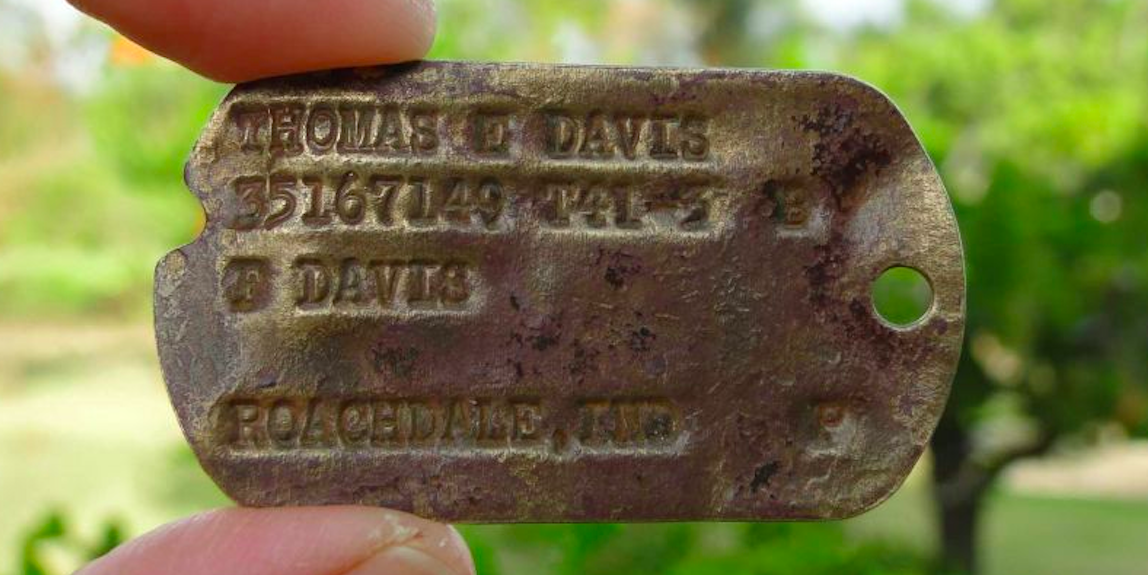In 1941, Private First Class Thomas E. Davis left his family farm in Indiana to serve in World War II. In one of the final battles of the global conflict, the soldier was killed. A year before, he earned one of the United States military’s highest honors.
Eight decades later, in 2014, Davis’ Army dog tags were found by cultural historian Genevieve Cabrera, “sticking out of the soil of a farm field” on the island of Saipan — the largest isle in the North Mariana Islands and actually, today, a commonwealth of the U.S.
Cabrera then handed them off to a Japan-based organization dedicated to finding the remains of the soldiers on the small landmass. They then notified the Associated Press, who helped track down Davis’ family members along with an archivist named Anthony Barger.
“He was a great guy,” said Davis’ sister, Dorothy Hollingsworth, 82. “He was always laughing and singing and whistling.”
More on Davis from the AP:
According to wartime records kept at the New York State Military Museum, home to many of the 27th Division’s documents, Davis earned the Silver Star on Saipan in June 1944 for risking his own life to rescue a wounded comrade “at a time when the American front was undergoing brutal Japanese artillery and mortar fire.”
Davis went into the Army in September 1941, three months before the Japanese attack on Pearl Harbor drew the U.S. into WWII. He served in the 165th Infantry Regiment of the 27th Infantry Division, a New York National Guard unit mobilized into active service in 1940.
Davis was with the 27th when it took part in the Okinawa invasion, which began on April 1, 1945. Three weeks later, he was shot by a Japanese sniper while again helping a wounded soldier, according to what Hollingsworth says military officials told the family. Davis died April 30, two months shy of his 28th birthday. Four years later, his body was brought back for reburial in his hometown.
According to the AP, representatives from the recovery org are arranging to meet with the family to hand over the tags.




































